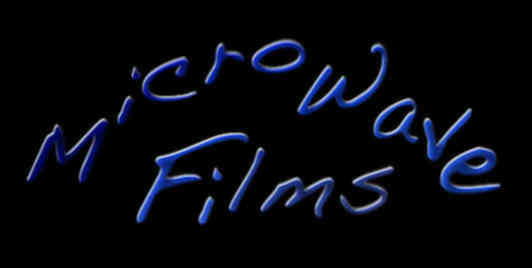The Final Voyage of the HIJMS Nagato Battleship
Submitted by Mr. Fred Herschler*, RM/2, crewman aboard the Ex-Japanese Battleship Nagato as it was bound for Bikini in 1946.
2/3/98
 From February 6th through May 11th, 1946, I was one of about 180 U.S. Navy personnel assigned to ready the Japanese battleship "Nagato" for her last trip to Bikini Atoll in the Marshall Islands for use in the atomic bomb tests known as "Operation Crossroads." The Nagato was the very ship, Admiral Isoroku Yamamoto's flagship, from which he heard the final code signal, "Tora! Tora! Tora!", informing him that the attack he engineered on Pearl Harbor was underway.
From February 6th through May 11th, 1946, I was one of about 180 U.S. Navy personnel assigned to ready the Japanese battleship "Nagato" for her last trip to Bikini Atoll in the Marshall Islands for use in the atomic bomb tests known as "Operation Crossroads." The Nagato was the very ship, Admiral Isoroku Yamamoto's flagship, from which he heard the final code signal, "Tora! Tora! Tora!", informing him that the attack he engineered on Pearl Harbor was underway.
I was one of two radio operators. Prior to my arriving in Japan, there were a number of technical and engineering personnel on board who were busy getting the ship operational for the 2,400 mile trip to Enewetak and Bikini atolls.
Even though the Nagato was the oldest surviving capital ship of the Imperial Navy, having been commissioned in 1920, it had engaged in combat and had been seriously damaged by air, surface and underwater attack in the Battle of the Philippine Sea.
 After 3 sea trial runs in Tokyo Bay during the first two weeks of March of 1946, and the final meetings between our captain and several ex-Japanese naval commanders who had a working knowledge of the Nagato, we left Japan for Enewetak on March 18th. Our companion ship for the journey was a relatively new light cruiser, the Sakawa, which had been commissioned in 1944.
After 3 sea trial runs in Tokyo Bay during the first two weeks of March of 1946, and the final meetings between our captain and several ex-Japanese naval commanders who had a working knowledge of the Nagato, we left Japan for Enewetak on March 18th. Our companion ship for the journey was a relatively new light cruiser, the Sakawa, which had been commissioned in 1944.
With only 2 of the 4 massive screws in operation, our best speed for the trip was 10 knots. The two unpowered screws simply rotated by the force of the flow of water; in fact, at first these two screws didn't even rotate. Since we were only on two 4 hour radio watch schedules, the other radio operator and myself did quartermaster duty as well, meaning we took our turns at the helm. A ship this size--35,000 tons sailing at only 10 knots--required careful attention to keep  it on course. When it wandered off course even slightly, you needed real patience and a delicate touch to bring it back again without slipping the other way: I am sure there were periods during rough seas when we must have been on a zigzag course.
it on course. When it wandered off course even slightly, you needed real patience and a delicate touch to bring it back again without slipping the other way: I am sure there were periods during rough seas when we must have been on a zigzag course.
During the first half of the trip, things went fairly smoothly, but that was soon to change. The Sakawa began having speed and fuel consumption difficulties, and the Nagato's fresh water evaporators couldn't supply enough fresh water for the comfort of the crew (saltwater showers are very cold!) and the pumps couldn't keep up with the seawater intake from battle damage. The many hasty repairs performed on the hull by the Japanese were not sufficient.
 On the 8th day, the ship held about 150 tons of sea water in the forward compartments; therefore, to balance the ship for efficient speed, it was necessary to take 260 tons of water into the stern compartments.
On the 8th day, the ship held about 150 tons of sea water in the forward compartments; therefore, to balance the ship for efficient speed, it was necessary to take 260 tons of water into the stern compartments.
On the 10th day, the Sakawa was essentially dead in the water and far behind us. The Nagato went back to give aid and to set a tow-line to the Sakawa. Shortly thereafter, the Nagato blew out a boiler and thus both ships were stopped. I had made radio contact with the Naval base in Enewetak, some 200 miles away. They advised they would send two navy tugs to our aid.
For the next two days, until the tugs arrived, we simply drifted in relatively calm seas and waited for rescue. The Sakawa managed to get towed at a much faster speed than the Nagato--we were in tow on day twelve at the speed of one knot, and by this time, we were being besieged by constant typhoon warnings. Happily, another larger tug came to our rescue the next day which increased our speed to 4 knots. By this time the Nagato had a 7 degree list to the port side because without power or pumps, we were constantly taking on water. We also had no electrical power and therefore no water or cooking facilities. Fortunately, we had plenty of K and C rations on board. We sailed in this condition for over two days.
 During this time, the water rose high enough in the ship to bring a group of crewmen into our midst which we knew nothing about (as well as an unbelievable stench)--I refer to the large 4 legged variety known as bilge rats. We later took on enough fuel from another large tug so we could run our generators for the power needed to light the ship and to cook with.
During this time, the water rose high enough in the ship to bring a group of crewmen into our midst which we knew nothing about (as well as an unbelievable stench)--I refer to the large 4 legged variety known as bilge rats. We later took on enough fuel from another large tug so we could run our generators for the power needed to light the ship and to cook with.
On April 2nd, the 16th day of our 10 day trip, we were scheduled to arrive in port at Enewetak. As a matter of fact, the Nagato was already in the channel when we received word of a major tidal wave hitting Hawaii. We were ordered to stay at sea while being towed in a large circle throughout the night because word had it that a portion of the typhoon could reach Enewetak.
The next morning, we found ourselves 30 miles out to sea facing another day of tug boats, broken tow lines, power failures and a bunch of upset sailors. Though we never felt the effect of the tidal wave where thousands of Hawaiians were made homeless, we did manage to drop the anchor in Enewetak on April 4th, the 18th day of the trip.
 After three weeks of repairs on Enewetak, the Nagato set out on the last 200 miles of her life: The destination being her final anchorage at Bikini Atoll. As if wanting to show her stuff for this final sprint, the great monster managed to cruise at 13 knots, the best speed we ever got out of her. We made the trip alone without any help and managed to drop the anchor at our assigned spot all by ourselves.
After three weeks of repairs on Enewetak, the Nagato set out on the last 200 miles of her life: The destination being her final anchorage at Bikini Atoll. As if wanting to show her stuff for this final sprint, the great monster managed to cruise at 13 knots, the best speed we ever got out of her. We made the trip alone without any help and managed to drop the anchor at our assigned spot all by ourselves.
Today that anchor is still in that spot but the Nagato is laying on top of it upside down in about 160 feet of water. The Nagato withstood the first bomb test, "Able", on July 1, 1946 with only some damage above the water line.
The Nagato was sent to her grave with the second test, the "Baker" shot on July 26, 1946. The Sakawa is also on the bottom of Bikini's lagoon.
*The people of Bikini Atoll would like to thank Mr. Fred Herschler for sharing his experiences aboard the Nagato for use on this web page. Mr. Herschler recommends Robert Stone's film, Radio Bikini [1987], for those who wish to learn more about the Operation Crossroads weapons tests on Bikini.
This Bikini Atoll website is sponsored by: To purchase or rent Microwave Films and DVDs MICROWAVE FILMS
|
 |
The historical information within this site, while constantly updated, is drawn largely from the book, FOR THE GOOD OF MANKIND: A History of the People of Bikini and their Islands, Second Edition, published in September of 2001 by Jack Niedenthal. This book tells the story of the people of Bikini from their point of view via interviews, and the author's more than two decades of firsthand experiences with elder Bikinians. Copies can be purchased from this direct ordering link at Amazon.com, or you can also buy and download the Kindle edition. |

